Deserts, Cacti, and Borders
The sign looks just a tad ominous. The road is rough, lonely, and remote.
“TRAVEL CAUTION” Smuggling and illegal immigration may be encountered in this area. Do not travel alone. Avoid encounters with suspicious persons. Avoid traveling at night. Dial 911 to report illegal activity.”
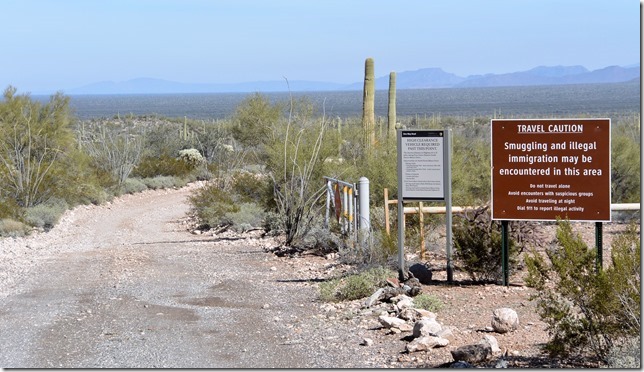
We are camped in Organ Pipe Cactus National Monument, just above the Mexican border in the south-central portion of Arizona. On our last visit, a few years ago, the border activity was so severe that the entire Monument was off-limits to tourists except the entrance roads and campgrounds. A ranger had recently been shot and killed by Mexican bandits (being chased by Federales for a bank robbery).
This year is vastly different, and we are grateful for the changes. The Border Patrol has added significant staff; an enormous vehicle-blockade has been constructed along the border; and the Park Service has acquired a new Superintendent of this area and an attendant change of heart.
For 2015, the entire back country is (re-) opened, and the beauty and lonesomeness of this remote area is once again available to enjoy. So, enjoy it we did – you can find our track for the day at this link: https://share.delorme.com/gregilles
The Monument is part of the Sonoran Desert, one of the four major desert systems in North America (the other three are the Chihuahua, Mojave, and the Great Basin). Only the Sonoran has warm-ish winters, and this provides the habitat for unique cacti, some of which grow nowhere else in the U.S.
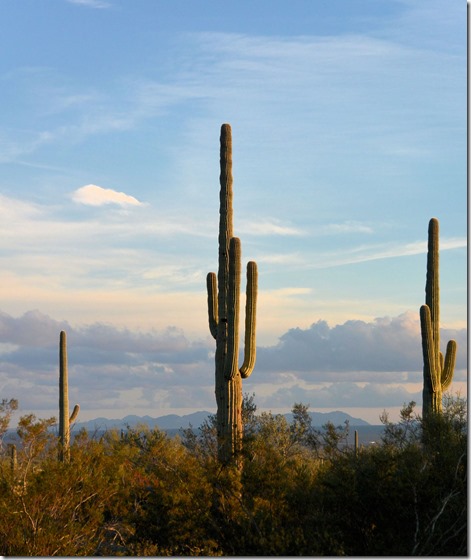
The quintessential icon of the West is the saguaro (say “sah warr oh”). I can hear John Wayne’s nasal drawl every time I see one. It ranges widely in the warmer Sonoran, grows to impressive heights (60 feet, that’s two standard telephone poles) and has been know to live over 150 years.
For all its massive size and height, it’s a sensitive plant. It tolerates only particular types of sun, climate and soils. The famous arms don’t appear until 75-100 years of age, and sometimes not at all. It grows and reproduces slowly, only from seeds produced in its sweet fruit, which grows only at the end of fiercely-spined columns.
The next largest columnar cactus in the Monument is the namesake, the Organ Pipe cactus.
The Organ Pipe grows in bunch-like formations, almost like a tuft of grass – but the “blades” are up to 8-12” in diameter and the “tuft” is 12 feet tall. It’s easy to distinguish from the Saguaro, with finer pleats and always the base-clustered bunch of spears. This species grows only here in the Monument.
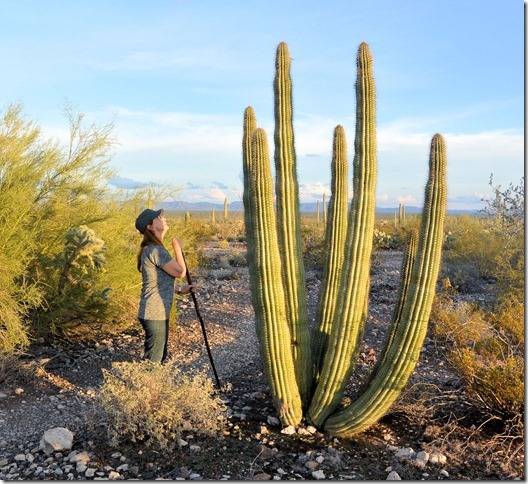
A less common cactus is the Senita, and we haven’t seen any yet – but maybe tomorrow. All of these columnar cacti work like vertical accordions, shrinking their pleats when dry and expanding them when wet. Sometimes they will even absorb so much water that they literally split.
Our travels took us completely around the Monument in a counter-clockwise direction, ranging over varied terrain and vegetation. To call this a desert is true, but misleading – it’s actually more of a garden. This area of Arizona gets about 8-9 inches of rain a year normally, distributed between winters and summers. The moisture and mild temperatures make for LOTS of growth and more than two dozen species of cactus growing amongst each other.
Against an evening sky, surrounded by the ubiquitous creosote and sage, a “verdant” field of fauna stretches everywhere for miles, as far as the eye can see. The Saguaro and Organ Pipe are accompanied by barrel cacti and several varieties of cholla, that most pernicious plant of the cactus family.
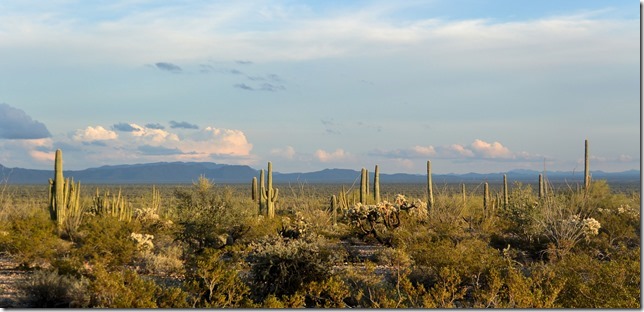
Ocotillo sprout up their naked rose-thorned branches, waiting for any sign of moisture to prompt some leaves and a bloom. Several days ago, some rain drizzled down – and the ocotillo’s branch-tips are already reacting.
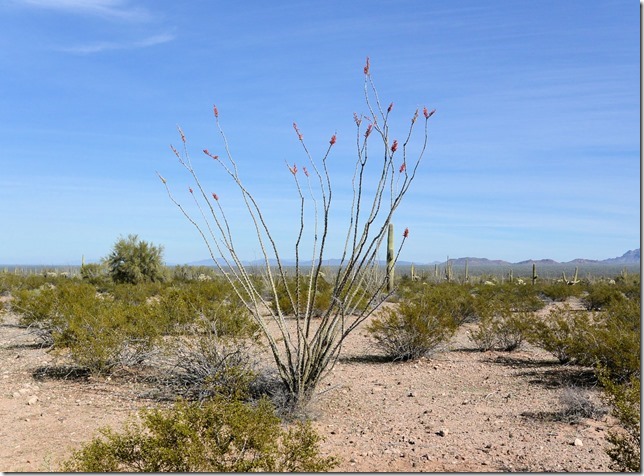
Old mines in the area lie in wait for the unwary – but the mines house bats, and the bats help pollinate and spread fruit-seeds. So rather than fill in the mines, the Park Service covers them up with bat-friendly screens. Bats in, people out, cacti propagating. Nice formula.
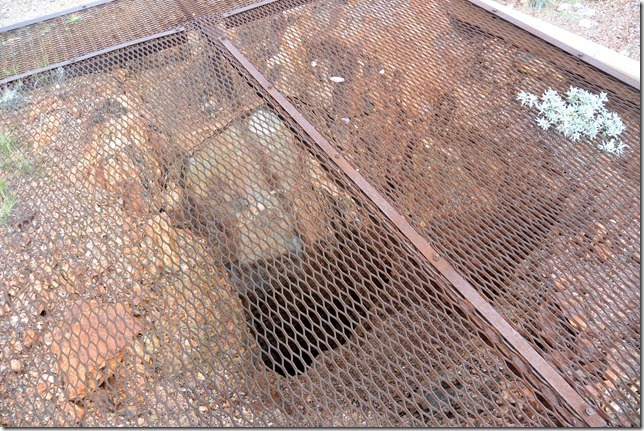
On another stretch of the road, an old cattle station weathers under the desert sky. The vegetation is slowly overtaking the old structures, and the dead fences, windmill, cistern, all have become mute trellises to support the living green things.
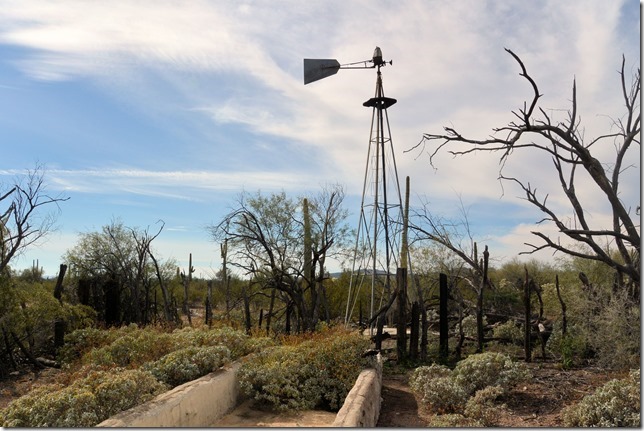
Here and there in the back country, people of various persuasions find themselves lost and helpless. We fondly expect to NOT be one of them, of course. The Border Patrol puts up emergency-call towers here and there. I didn’t know it until today, but the language on the bottom is Pima Indian, a local tribe.
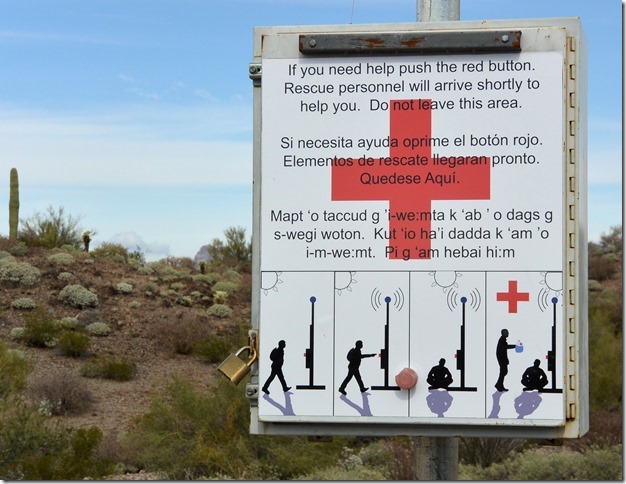
It hasn’t rained in a couple of days – but the dry desert sand just doesn’t soak up the water very fast. This is the reason for flash-floods, the water simply tends to stay on the surface.
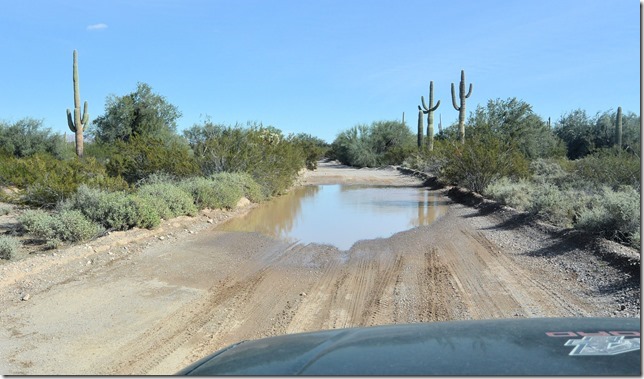
The new vehicle barrier, 8×8 steel posts with railroad rails welded to them. MILES and miles and miles (I don’t know how many). Unimaginable expense. I’m curious as to why the long-post, short-post design. Mutt and Jeff taking turns driving the posts in?
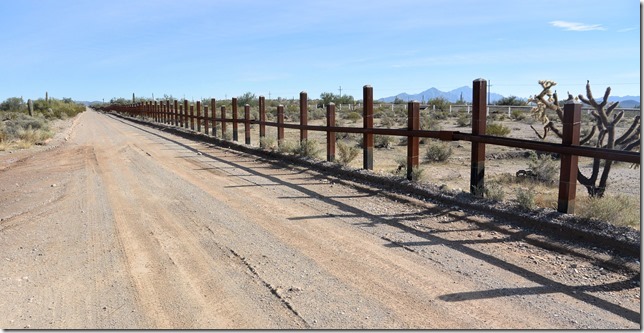
A hundred yards away from our lonely little Monument road, trucks whiz obliviously along Mexico’s Highway 2. So near, and yet so far, for so many people. While we stand there, five Federal Police cars shriek by, sirens howling and lights flaring. It all seems like an uninvolving TV show. We drive on amongst our new friends, the cacti.
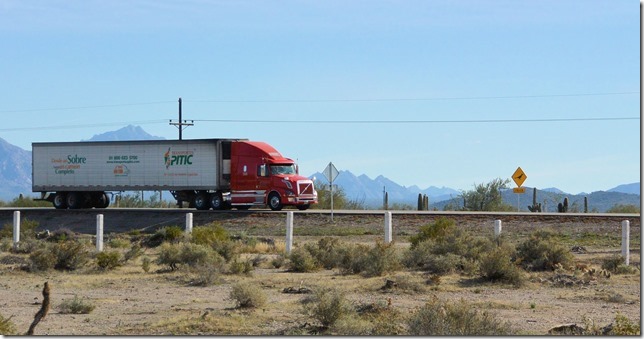
Flanked by the spines of tens of thousands of thorny denizens, the border and its road and barrier snake inexorably up and over any and all obstacles. Border Patrol white cars dot every high point. Inside the cars, the distant tiny dark shadows watch the landscape for interlopers, like hawks for mice.
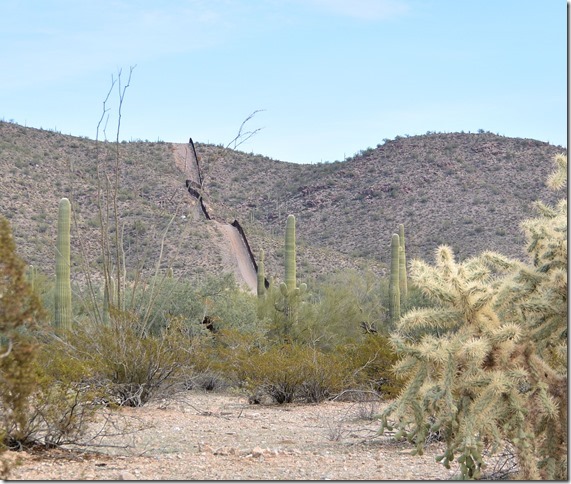
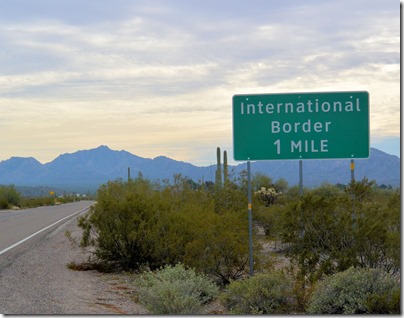
At highway AZ-85, we turn away from Mexico and head a short distance back to camp. The day has been an interesting mix of wildness, botany, and politics. And never a dull moment.
Oh, and nope – we didn’t see any Illegals, unless you count one dog that came across the border. But he then thought better of it and went back to Mexico. What does he know.
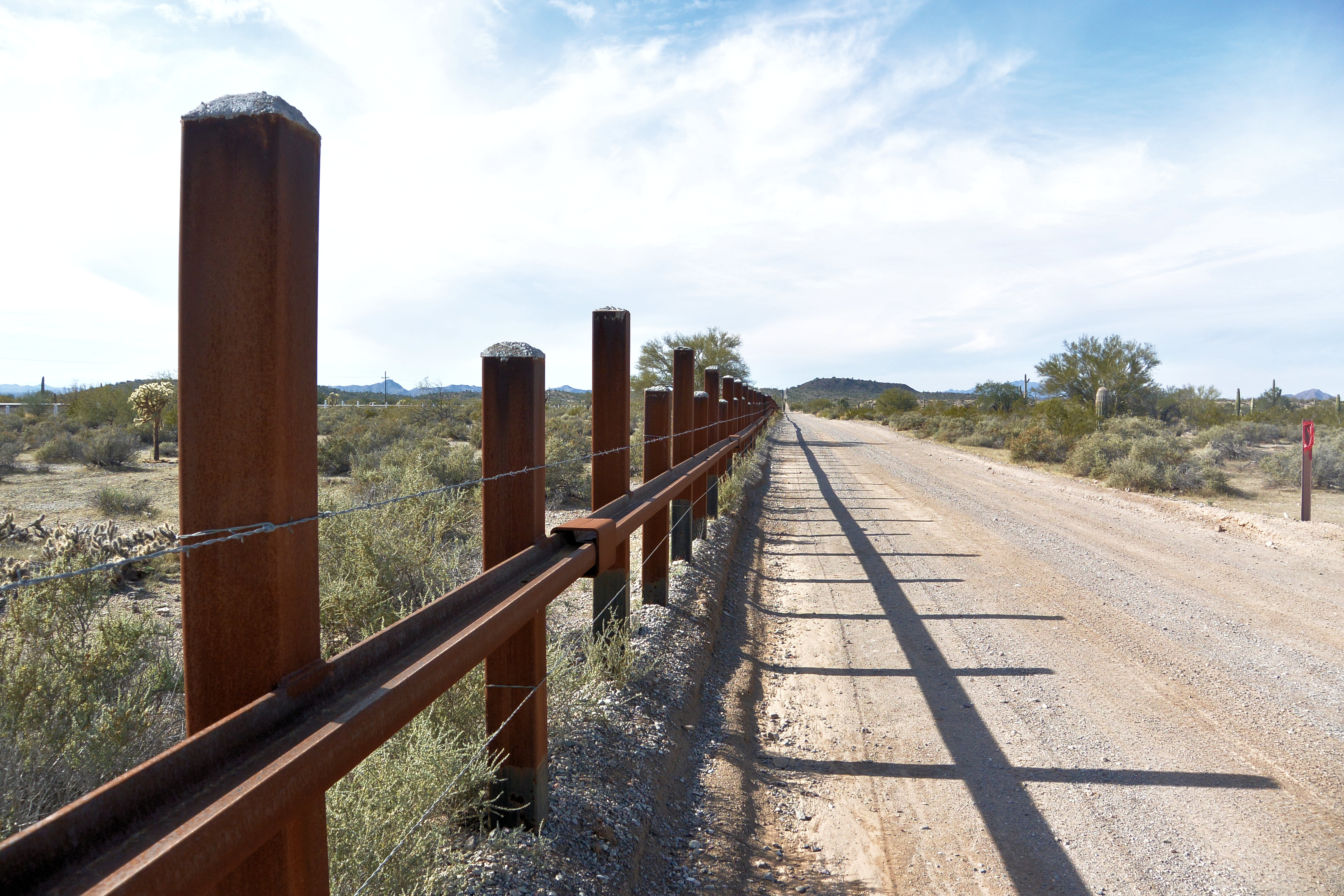
As always, I thoroughly enjoyed your writings. Also very good descriptions AND Pictures. Glad you two are having a great time.
Keep on writing 🙂
Weav
Great post, thanks Greg.
as always Greg and Karen,very interesting stories..
take care ..tony and marlene
Really great article, Greg.